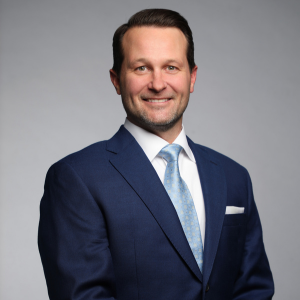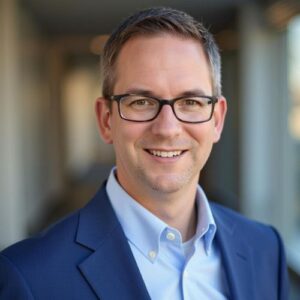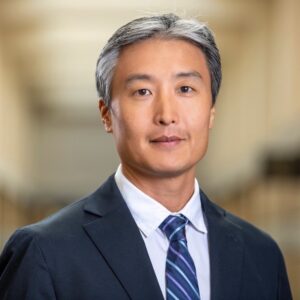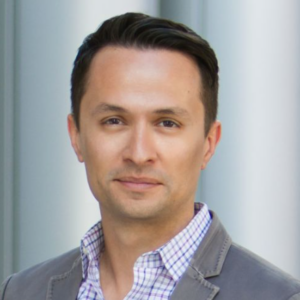Technology Training for Frontline Staff: How to Make Learning New Tools Easier
As technology becomes increasingly integral to the senior care industry, staff are faced with learning new platforms and tools at a rapid pace. In many cases, adopting new technology can significantly alter daily responsibilities, and the learning curve can be steep. As senior care communities evaluate and implement new systems, it’s essential that they place equal emphasis on how they train and support staff throughout the transition.
How to Ensure New Technology Doesn’t Overwhelm Staff

Jay Mikosch, campus executive director at Wellington Bay
Learning new technology can be overwhelming, especially if the changes are frequent or staff lack confidence in their technology skills. Jay Mikosch, campus executive director at Wellington Bay, understands the emotional toll this can take and regularly checks in with staff to gauge their comfort levels.
Mikosch begins these conversations during the interview process, asking applicants about their technology knowledge and experience. “I think having an open discussion and finding out what platforms they’re currently using or they have used is important,” he says. He also asks candidates about how they feel about learning new technology. Some candidates are candid and will explain that if there’s a lot of technology involved, the position may not be right for them. Others are excited about the opportunity to learn and use new tools.
Thanks to those conversations, Mikosch has a clear sense of each staff member’s technology proficiency before they’re even hired. From there, he introduces new tools gradually and pairs staff with a peer buddy. “It’s one thing to learn [technology] in a classroom, but I think it’s even better to be able to experience it and ask questions of a peer buddy who works with it every day,” he explains.

Dr. Arup Roy-Burman, MD, chief medical officer and co-founder of Elemeno Health
Dr. Arup Roy-Burman, MD, chief medical officer and co-founder of Elemeno Health, a microlearning technology company that frequently works with senior care communities, also recommends a slow approach to introducing new technology. He suggests that communities go step-by-step and keep learning simple. “Use visuals, such as short videos and pictures, alongside brief text so people with different technology, language, and reading levels can easily follow,” he says. “Focus on the ‘how’ more than the ‘why’ and ‘what.’”
For instance, Elemeno Health recently deployed training for a new electronic health record to thousands of Alameda County community health workers. Many of those workers are not nurses and have limited prior training. “Bite‑sized job aids made onboarding easier and, crucially, sustained learning by enabling staff to quickly return to micro‑content at the moment of need, similar to how people use YouTube,” says Dr. Roy-Burman.
How to Meet Staff at Their Current Knowledge Levels
Supporting staff starts with recognizing that employees bring different levels of comfort and experience with technology. Elemeno Health structures training to reach a diverse workforce with different learning preferences. By offering multiple modalities, such as visuals with subtitles for visual learners and narration for auditory learners, each employee can engage with the material in the way that’s most effective for them.
“All content is kept short, focused, and immediately actionable, with each one addressing a specific need or workflow moment,” Dr. Roy-Burman explains. “This ensures staff can apply what they’ve learned right when they need it, whether on that day or months later.” The structure of the training eliminates the need for staff to remember every detail.
How to Address Nerves and Hesitance Around New Technology
Creating a supportive environment is essential in helping staff overcome anxiety about new technology. If staff express nervousness or hesitation about new technology, Mikosch reassures them that the community will support their learning and help them feel confident. He also stresses the value of keeping the process enjoyable. “Be able to laugh along the way and create an environment where staff feel comfortable asking any question imaginable,” he recommends. “There should be no such thing as a stupid question.”
Peer modeling can also be especially valuable when staff feel hesitant about new technology. “When staff see training images or videos including their coworkers using a new tool, they’re more confident,” says Dr. Roy-Burman. “Incorporate your own people rather than relying solely on vendor content.”
He also notes that technology hesitance is becoming less common as more Gen Z caregivers enter the workforce, since they tend to embrace new tools quickly. “As digital natives, members of Gen Z often prefer digital learning techniques that more closely resemble their social media experiences growing up,” he says. “Short videos, graphics, diagrams, and other similar simple job aids cater to their educational preferences and improve knowledge retention.”
Best Practices for Offering Technology Training to Staff
Effective training also depends on making content relatable and easy to access. Dr. Roy-Burman recommends using real staff in training materials, so learners can see their peers demonstrating success. He also suggests keeping trainings short and situational, focusing on micro-content that addresses immediate needs.
It’s equally important to allow staff to access training at any time. “Support mobile and off‑site use so training can happen at the teachable moment – whenever and wherever a team member is thinking about it,” Dr. Roy-Burman recommends. For its electronic health records training, Elemeno Health chose to focus strictly on how to perform key tasks. By removing any public health information, the security requirements are reduced, making it easier for staff to log in and access the training.
Making trainings fun and engaging can also spark stronger participation. Dr. Roy-Burman suggests incorporating gamification, such as team-based or peer-to-peer challenges, to motivate staff and boost engagement.
It’s important to allow ample time for staff to complete their training. “I think sometimes we cut ourselves short with all of the other things we have going, the various deadlines, and the hardware pieces,” says Mikosch. “For the technology to be successful and to benefit resident care and community operations, the end user needs to be able to use it successfully.” Be sure to allow enough time for training, and then circle back with each user to assess their ability to use the product. Consider how to provide additional training if needed, as well as what form that training might be, such as classroom or peer buddy training.
As technology continues to reshape the senior care industry, staff will likely need to learn new platforms and tools more frequently in the years ahead. Still, training doesn’t have to feel difficult or discouraging. “Technology is ever-changing and an important part of what we do,” says Mikosch. “If it’s presented or embraced in a fun and positive manner, I find that staff are really excited to learn it and excited for the challenge.”
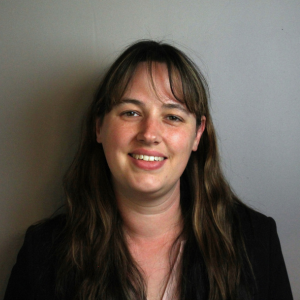
Paige Cerulli is a contributing writer to i Advance Senior Care.
Related Articles
Topics: Facility management , Featured Articles , General Technology , Information Technology , Operations , Training



